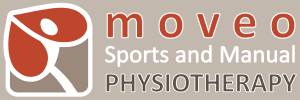
Returning to golf after an injury can sometimes be tricky. One of the more common mistakes golfers make when trying to get back to golf after an injury is simply jumping right back in, resulting in doing too much too soon.
Types of Injuries
When you take a step back and think about the type of injuries that occur to golfers, you tend to see a pattern.
The most common golf injuries seen are typically:
- Low back pain
- Elbow tendonitis
- Wrist pain
- Neck pain
All of these golf injuries occur predominantly from overuse or poor workload management, rather than an acute injury.
Mistakes When Returning to Golf
Anyone that golfs knows how easy it is to go to the driving range and just swing away. It’s very easy to take 75+ swings in a really short amount of time with no warm-up. Just get out of the car and start swinging away! Golf is also a sport that many recreational golfers play occasionally. It’s not uncommon for someone to go weeks without swinging a golf club, and then play several rounds in one weekend.
Many golfers think trying to get back to golf after an injury is like turning on a lightbulb. Even though poor workload management was likely a key factor in sustaining their golf injury, once they start to feel better, they return to golf at the same workload and overload the healing tissue again.
How to Return to Golf After an Injury
The key to returning to golf after an injury is building a gradual plan to return that slowly applies load. You want to avoid doing things too quickly, we have to slow down the process.
Many golfers think this means they need to do less. But remember, quantity is just one part of the workload equation for golfers. Frequency and intensity are also important.
Luckily, a workload progression is easy to do if you break down the different components of the game of golf. You can easily break golf down into both “distance” and “finesse” shots. Distance shots are full effort, but finesse shots are often partial effort. You can also do the same with different club lengths.
How to Build a Return to Golf Program After an Injury
So, remember, when trying to get back to golf after an injury, there are a lot more things you can do to build up to your full golf swing. The key is making sure that you understand how to manage the workload progression.
Here are a couple of options of return to golf programs as an example of how to build up the volume and intensity, while controlling the frequency:
- Day 1 – 20 full swings
- Day 2 – 20 finesse swings
- Day 3 – off
- Day 4 – 30 full swings
- Day 5 – 30 finesse swings
Or another option could be:
- Day 1 – 20 finesse swings, 10 full swings
- Day 2 – off
- Day 3 – 15 finesse swings, 15 full swings
- Day 4 – off
- Day 5 – 15 finesse swings, 20 full swings
Those are not specific to a certain injury, you can see how manipulating the workload to get back to golf after an injury can be used as a baseline to build your own return to golf program.
We Can Help!
If you have an injury limiting your return to golf, do not hesitate to contact your physiotherapy clinic in Orléans, Moveo Sports and Manual Physiotherapy. We can help you!
This text written by Adam Prokaziuk, registered physiotherapist and TPI certified provider. If you are looking for a golf assessment and training program, check out this new service offered at Moveo Sports and Manual Physiotherapy!

